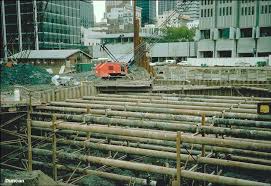Nov . 12, 2024 13:23 Back to list
formwork removal time for column manufacturer
Understanding Formwork Removal Time for Column Manufacturing
Formwork plays a crucial role in the construction of concrete structures, especially when it comes to columns, which are fundamental elements in building stability and design. The formwork is essentially a temporary mold in which concrete is poured and shaped until it sets and attains sufficient strength. One critical aspect of the formwork process is the timing of its removal. In this article, we will explore the various factors influencing formwork removal time for column manufacturing, along with its implications for construction efficiency and project timelines.
Importance of Formwork Removal Timing
Proper timing for the removal of formwork is vital to ensure that the newly cast columns achieve their intended structural integrity while facilitating overall project workflow. If the formwork is removed too early, the concrete may not have developed sufficient strength, leading to potential structural weaknesses and defects. Conversely, if the formwork is left in place for too long, it can result in increased labor costs, delays in subsequent construction activities, and even damage to the formwork itself.
Factors Influencing Formwork Removal Time
1. Concrete Mix Design The characteristics of the concrete mix—such as the type of cement, aggregate size, water-cement ratio, and any additives—play a significant role in determining how quickly the concrete can reach a strength suitable for formwork removal. High-performance concrete mixes can often achieve the necessary strength more quickly than standard mixes.
2. Environmental Conditions Temperature and humidity significantly affect the curing process of concrete. Higher temperatures can accelerate the curing time, while colder and humid conditions may slow it down. Construction teams must monitor weather conditions closely, as they can dictate the appropriate timing for formwork removal.
formwork removal time for column manufacturer

3. Column Design Specifications The geometry and dimensions of the columns also affect formwork removal time. Larger and more complex column shapes may require extended curing times compared to standard cylindrical columns. Understanding the design specifications helps in accurately estimating the optimal removal time.
4. Type of Formwork Used Different formwork systems, such as timber, plastic, or metal, have varying influences on the curing process. Some materials may retain heat, thereby accelerating concrete curing, while others might not provide the same level of insulation, consequently impacting the timing of removal.
Best Practices for Formwork Removal
To optimize formwork removal timing, construction professionals should adhere to several best practices
- Follow Manufacturer Guidelines Many manufacturers provide specifications regarding curing times based on their products. It is essential to consult these guidelines to prevent miscalculations. - Conduct Field Tests Before full-scale removal, conducting field tests to assess the strength of the concrete can provide valuable insights, ensuring that the concrete has reached the necessary strength for formwork removal. - Utilize Curing Techniques Implementing effective curing techniques can ensure more uniform strength development, allowing for a safer and earlier removal of formwork.
Conclusion
The removal of formwork for column manufacturing is a critical process that significantly impacts construction efficiency and project timelines. Understanding the multitude of factors that affect this timing enables construction teams to make informed decisions, ensuring both safety and cost-effectiveness. By adhering to best practices and continuously monitoring conditions, it is possible to optimize formwork removal times, contributing to the overall success of construction projects. As the construction industry evolves, advancements in materials and techniques will continue to influence time management in this essential aspect of concrete work.
-
High-Quality U Head Jack Scaffolding – Reliable Scaffolding Jack Head Manufacturer & Factory
NewsJul.08,2025
-
High-Quality I Beam H20 Leading Timber Beam H20 Material Factory, Exporters & Manufacturers
NewsJul.08,2025
-
High-Quality Powder Coating Steel Formwork - Durable & Corrosion Resistant Solutions
NewsJul.07,2025
-
Inclined Column Formwork Supplier – Durable & Precise Solutions for Unique Structures
NewsJul.07,2025
-
High-Quality Water Stop Solutions Trusted Water Stop Company & Suppliers
NewsJul.07,2025
-
High-Quality Formwork Material Supplier Reliable Manufacturer & Factory Solutions
NewsJul.06,2025